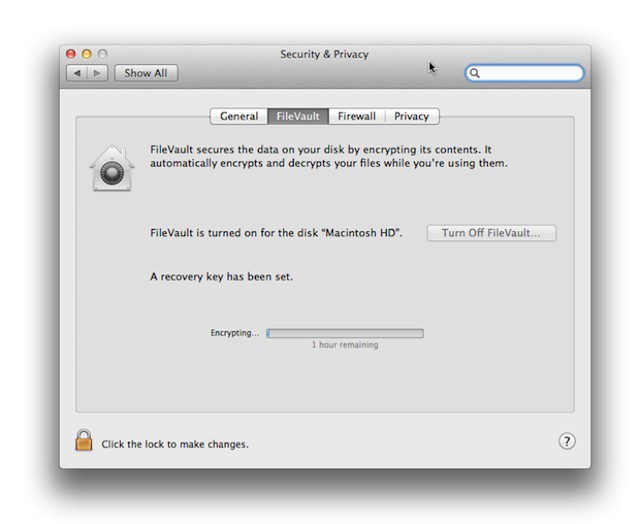Generate A New Key For File Valut 2
The FileVault option in macOS is a fantastic way to enhance the security of your data at rest. It’s full-disk encryption (FDE), meaning that your entire startup volume is locked away when macOS is shut down (not just sleeping) using strong encryption. Feb 16, 2018 If you don't want to use iCloud FileVault recovery, you can create a local recovery key. Keep the letters and numbers of the key somewhere safe—other than on your encrypted startup disk. I recently used the 2nd option (iCloud) and did not expect to get a recovery key.
-->- If there are existing keys, you may want to use those: go to either SSH user keys for personal use or SSH access keys for system use. Back up old SSH keys. If you have existing SSH keys, but you don't want to use them when connecting to Bitbucket Server, you should back those up. In a command prompt on your local computer, run.
- Secure key management is essential to protect data in the cloud. Use Azure Key Vault to encrypt keys and small secrets like passwords that use keys stored in hardware security modules (HSMs). For more assurance, import or generate keys in HSMs, and Microsoft processes your keys in FIPS 140-2 Level 2 validated HSMs (hardware and firmware).
- Feb 02, 2015 With the release of Yosemite, Apple has continued to add functionality to fdesetup, a valuable command-line tool for enabling, administering and disabling Apple's FileVault 2 encryption. This tool gives Mac administrators the following command-line abilities: Enable or disable FileVault 2 encryption on a particular Mac Use a personal recovery key, an institutional recovery key,.
- For more background and examples, see Detailed steps to create SSH key pairs. For additional ways to generate and use SSH keys on a Windows computer, see How to use SSH keys with Windows on Azure. Supported SSH key formats. Azure currently supports SSH protocol 2 (SSH-2) RSA public-private key pairs with a minimum length of 2048 bits.
- Aug 14, 2019 Dismiss Join GitHub today. GitHub is home to over 40 million developers working together to host and review code, manage projects, and build software together.
Azure Key Vault is a cloud service that provides a secure store for secrets. You can securely store keys, passwords, certificates, and other secrets. Azure key vaults may be created and managed through the Azure portal. In this quickstart, you create a key vault, then use it to store a secret. For more information on Key Vault, review the Overview.
If you don't have an Azure subscription, create a free account before you begin.
Sign in to Azure
Sign in to the Azure portal at https://portal.azure.com.
Create a vault
How To Stop Filevault

- From the Azure portal menu, or from the Home page, select Create a resource.
- In the Search box, enter Key Vault.
- From the results list, choose Key Vault.
- On the Key Vault section, choose Create.
- On the Create key vault section provide the following information:
- Name: A unique name is required. For this quickstart, we use Contoso-vault2.
- Subscription: Choose a subscription.
- Under Resource Group, choose Create new and enter a resource group name.
- In the Location pull-down menu, choose a location.
- Leave the other options to their defaults.
- After providing the information above, select Create.
Take note of the two properties listed below:
- Vault Name: In the example, this is Contoso-Vault2. You will use this name for other steps.
- Vault URI: In the example, this is https://contoso-vault2.vault.azure.net/. Applications that use your vault through its REST API must use this URI.
At this point, your Azure account is the only one authorized to perform operations on this new vault.
Generate A New Key For Filevault 2 7
Add a secret to Key Vault
To add a secret to the vault, you just need to take a couple of additional steps. In this case, we add a password that could be used by an application. The password is called ExamplePassword and we store the value of hVFkk965BuUv in it.
- On the Key Vault properties pages, select Secrets.
- Click on Generate/Import.
- On the Create a secret screen choose the following values:
- Upload options: Manual.
- Name: ExamplePassword.
- Value: hVFkk965BuUv
- Leave the other values to their defaults. Click Create.
Once that you receive the message that the secret has been successfully created, you may click on it on the list. You can then see some of the properties. If you click on the current version, you can see the value you specified in the previous step.
By clicking 'Show Secret Value' button in the right pane, you can see the hidden value.
Clean up resources
Other Key Vault quickstarts and tutorials build upon this quickstart. If you plan to continue on to work with subsequent quickstarts and tutorials, you may wish to leave these resources in place.When no longer needed, delete the resource group, which deletes the Key Vault and related resources. To delete the resource group through the portal:
- Enter the name of your resource group in the Search box at the top of the portal. When you see the resource group used in this quickstart in the search results, select it.
- Select Delete resource group.
- In the TYPE THE RESOURCE GROUP NAME: box type in the name of the resource group and select Delete.
Next steps
Filevault For Windows
Windows 7 activation and key generator. In this quickstart, you created a Key Vault and stored a secret in it. To learn more about Key Vault and how to integrate it with your applications, continue on to the articles below.
- Read an Overview of Azure Key Vault
- See the Azure Key Vault developer's guide
- Review Azure Key Vault best practices